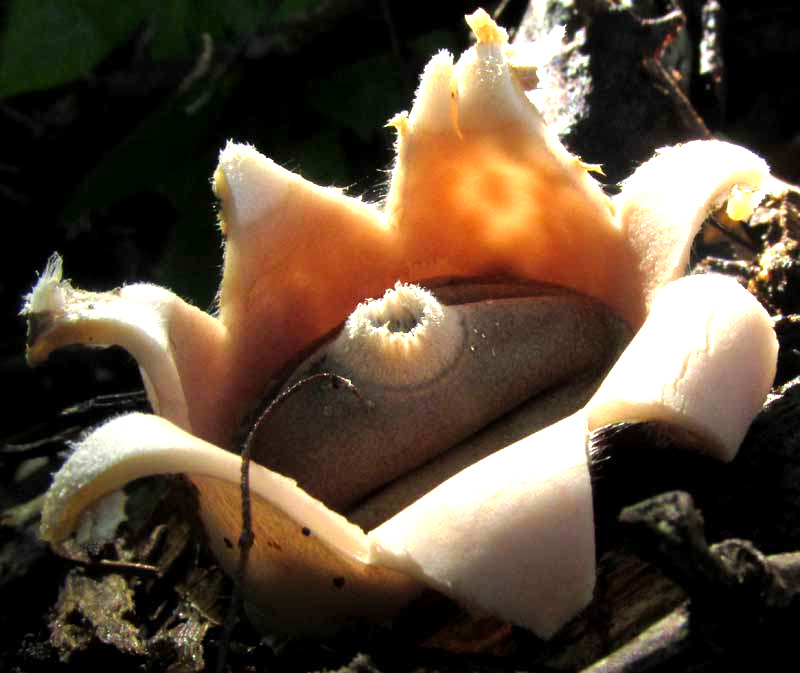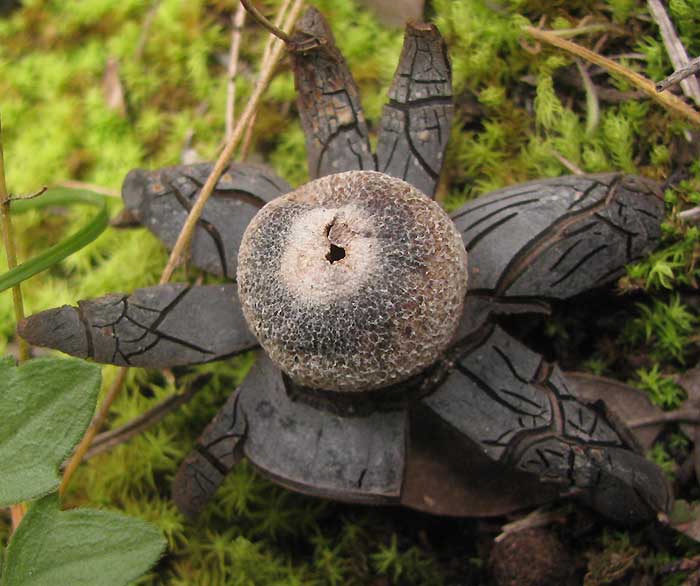(SOURCE: NCBI database)
KINGDOM: Fungi
DIVISION: Basidiomycota
CLASS: Agaricomycetes
ORDER: Geastrales
FAMILY: Geastraceae
During much of their life cycles, earthstars look like puffballs. However, when mature, the covering of the earthstar's body splits into a variable number of rays, which account for the mature earthstar's "star shape," as shown below:

When mature, as with the puffballs, spores formed inside the ball-like fruiting body escape through a hole in the top. In some species, when it rains, the rays curve back up over the fruiting body. Some species can also squirt, black, sticky, spore-containing globs onto nearby surfaces.

At last when their rays are extended, earthstars are easy to recognize. About 64 earthstar species are recognized, distributed among eight or so genera.
At the right, a species known as the Barometer Earthstar, Astraeus hygrometricus, so named because -- you guessed it -- when the air is moist the rays open up, forming the star. It would make more sense to call the species "Hygrometer Earthstar," since barometers measure air pressure, not humidity, but that's just the way common names are. More people known about barometers than hygrometers.